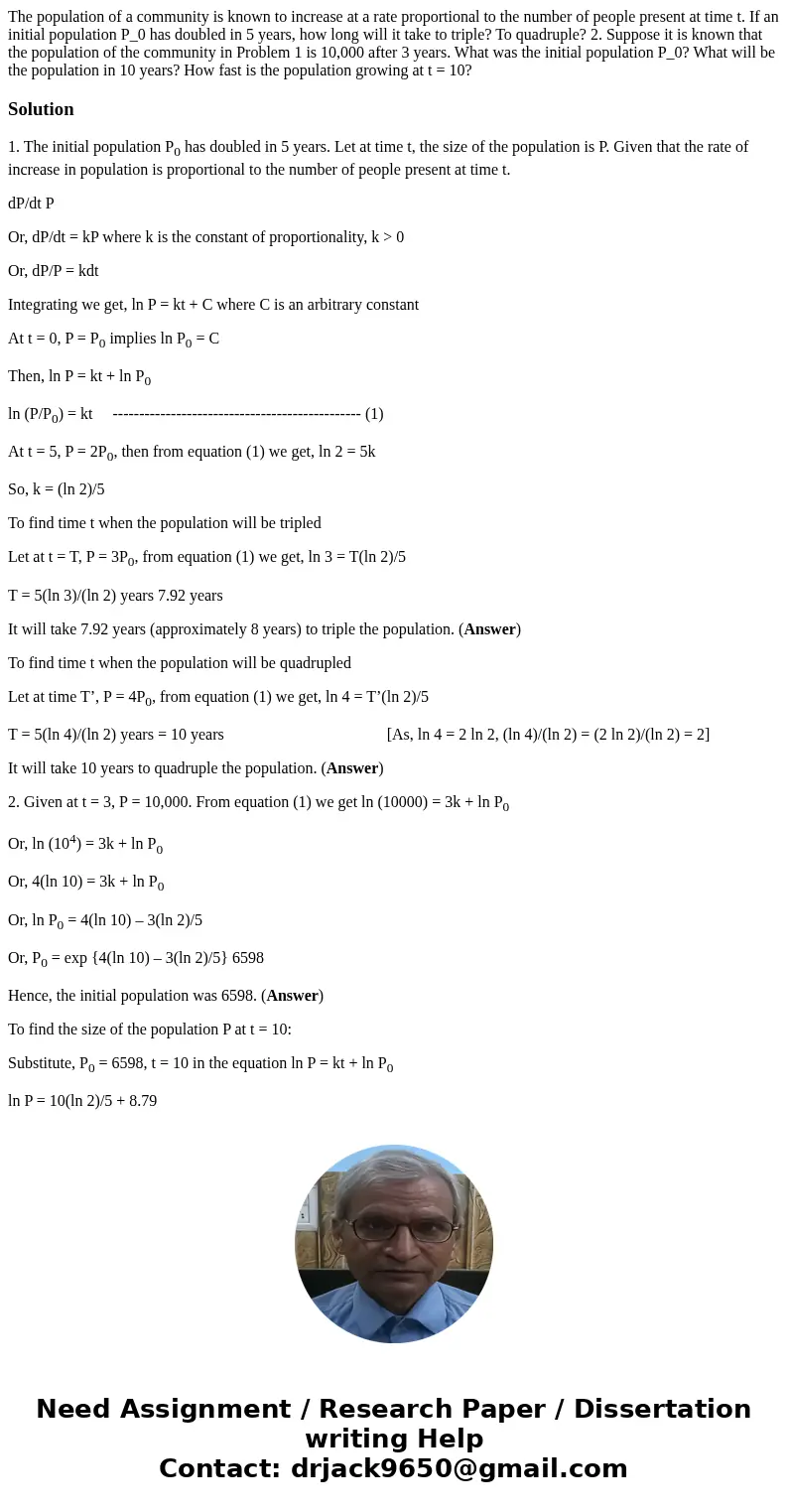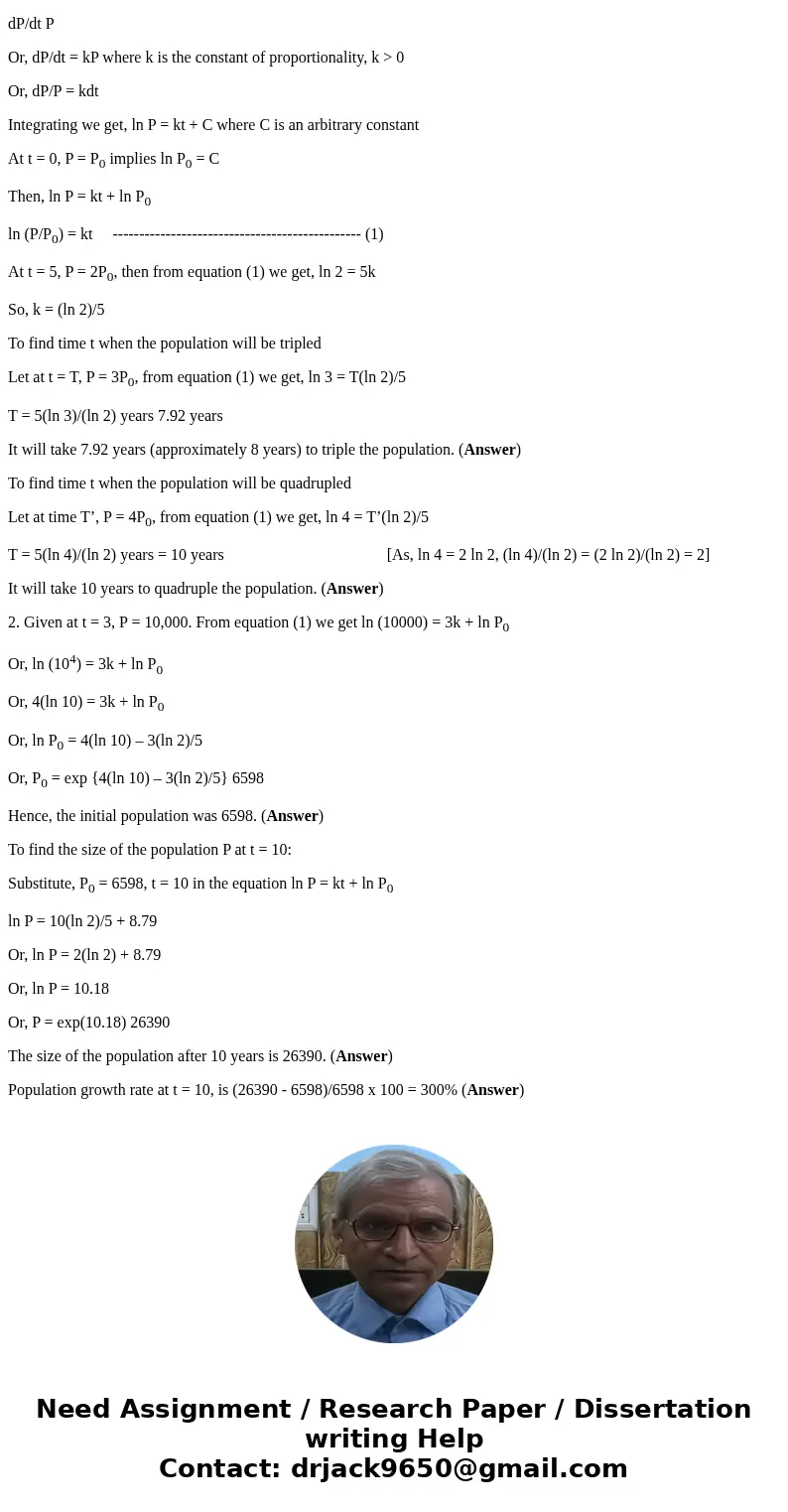The population of a community is known to increase at a rate
Solution
1. The initial population P0 has doubled in 5 years. Let at time t, the size of the population is P. Given that the rate of increase in population is proportional to the number of people present at time t.
dP/dt P
Or, dP/dt = kP where k is the constant of proportionality, k > 0
Or, dP/P = kdt
Integrating we get, ln P = kt + C where C is an arbitrary constant
At t = 0, P = P0 implies ln P0 = C
Then, ln P = kt + ln P0
ln (P/P0) = kt ----------------------------------------------- (1)
At t = 5, P = 2P0, then from equation (1) we get, ln 2 = 5k
So, k = (ln 2)/5
To find time t when the population will be tripled
Let at t = T, P = 3P0, from equation (1) we get, ln 3 = T(ln 2)/5
T = 5(ln 3)/(ln 2) years 7.92 years
It will take 7.92 years (approximately 8 years) to triple the population. (Answer)
To find time t when the population will be quadrupled
Let at time T’, P = 4P0, from equation (1) we get, ln 4 = T’(ln 2)/5
T = 5(ln 4)/(ln 2) years = 10 years [As, ln 4 = 2 ln 2, (ln 4)/(ln 2) = (2 ln 2)/(ln 2) = 2]
It will take 10 years to quadruple the population. (Answer)
2. Given at t = 3, P = 10,000. From equation (1) we get ln (10000) = 3k + ln P0
Or, ln (104) = 3k + ln P0
Or, 4(ln 10) = 3k + ln P0
Or, ln P0 = 4(ln 10) – 3(ln 2)/5
Or, P0 = exp {4(ln 10) – 3(ln 2)/5} 6598
Hence, the initial population was 6598. (Answer)
To find the size of the population P at t = 10:
Substitute, P0 = 6598, t = 10 in the equation ln P = kt + ln P0
ln P = 10(ln 2)/5 + 8.79
Or, ln P = 2(ln 2) + 8.79
Or, ln P = 10.18
Or, P = exp(10.18) 26390
The size of the population after 10 years is 26390. (Answer)
Population growth rate at t = 10, is (26390 - 6598)/6598 x 100 = 300% (Answer)


 Homework Sourse
Homework Sourse